#markus rothkowitz
Text
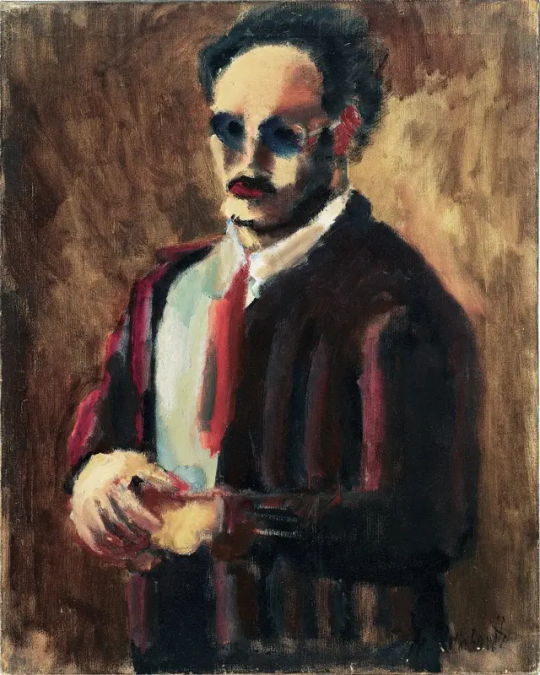
Markus Yakovlevich Rothkowitz , “Self-Portrait” (1936),
Oil on canvas, 32 1/4 x 26 inches.
Collection of Christopher Rothko,
© 1998 Kate Rothko Prizel & Christopher Rothko – Adagp, Paris, 2023.
Markus Rothkowitz was born in 1903, in what was then the Russian Empire and what is today Latvia, but 10 years later he emigrated along with his family to the US.
They were from the educated middle class, and Markus was a brilliant youth, leaving Yale University in 1923 and joining the Art Students’ League in New York.
He was naturalized as an American citizen in 1938 and soon changed his name.
For the rest of his life he was Mark Rothko.
#art#fierce#markus rothkowitz#self portrait#1936#mark rothko#russia#latvia#painting#history#abstract expressionism#christophe rothko#portrait#suicide
25 notes
·
View notes
Text
🎨 REAL Rothkos

Mark Rothko - Light Red Over Black - 1957
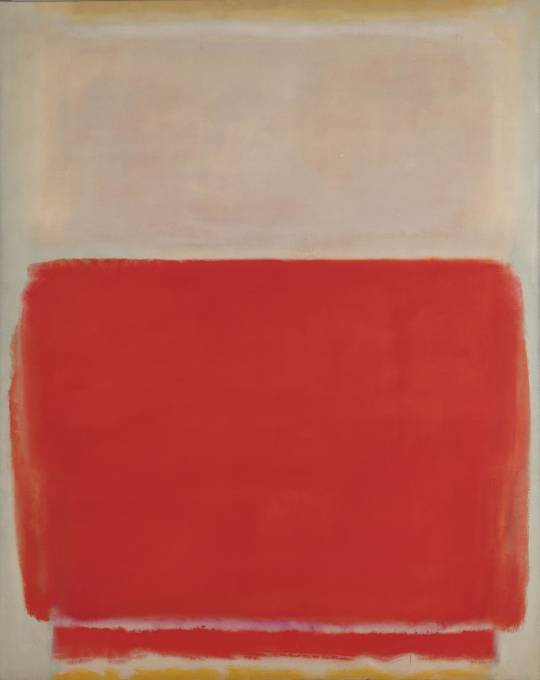
Mark Rothko - No. 3 - 1953

Mark Rothko - Untitled - 1959

Mark Rothko - Untitled - 1967

Mark Rothko - Untitled (Brown & Gray) - 1969

Alexander Liberman - Mark Rothko - 1964
🔽 BONUS 🔽

Mark Rothko - Sienna, Orange on Wine - 1962
#rothko#mark rothko#color fields#markus rothkowitz#abstract expressionism#paintings#art#no. 3#untitled#artists#photo-portrait
5 notes
·
View notes
Text
The part of Red that struck me most in the moment:
Something about Rothko telling Ken that he has a future outside of the studio, Ken never being heard of again after he leaves it, and the play ending soon after Ken goes. Out of universe it makes sense, as Ken didn’t actually exist but looking as it from within the in play’s universe it’s…temporal, like the type of art Rothko claimed Ken liked.
#shame this piece is closed off to so many#red#the play red#john logan#mark rothko#markus yakovlevich rothkowitz#noelle's rambles
0 notes
Video
Happy Birthday Mark Rothko
born Markus Yakovlevich Rothkowitz, September 25, 1903, Daugavpils, Latvia
Thank you to everyone here who shares their thoughts, impressions and personal pictures from museum visits. Your participation helps keep the work alive.
Should be a good year here too with things coming that no one (including me) has ever seen in digital form.
Peace and love to all of you.
#mark rothko#rothko#daily rothko. dailyrothko#abstract expressionism#art#modern art#abstraction#important art#color field painting#gallery#oil painting#new york artist
190 notes
·
View notes
Text
Mark Rothko: Revolucionando la Pintura Abstracta

Mark Rothko, un pintor abstracto de origen letón y nacionalidad estadounidense, tuvo un impacto profundo en la esencia y el diseño de la pintura abstracta. Sus contribuciones artísticas se caracterizan por una atención meticulosa a elementos formales como el color, la forma, el equilibrio, la profundidad, la composición y la escala. El objetivo de Rothko era crear pinturas que pudieran evocar emociones profundas en los espectadores, adentrándose en las profundidades de la experiencia humana, incluyendo la tragedia, el éxtasis y el destino. Él veía el arte como una forma poderosa de comunicación y un acto moral. La evolución estilística de Rothko encarnaba un renacimiento radical en la pintura, pasando de un repertorio visual figurativo a un estilo abstracto que involucraba activamente al observador con la obra de arte. Su influencia en la pintura estadounidense del Expresionismo Abstracto fue profunda.
Primeros años y carrera
Markus Yakovlevich Rothkowitz nació en Letonia en 1903. En el año 1913, decidió partir hacia los Estados Unidos junto a su familia en busca de nuevas oportunidades y horizontes.. Rothko estudió brevemente en la Universidad de Yale antes de abandonarla para encontrar su dirección y lugar en Nueva York en 1925. Su carrera pictórica de 45 años se puede dividir en cuatro períodos distintivos: los años realistas de 1924 a 1940, los años surrealistas de 1940 a 1946, los años de transición de 1946 a 1949 y los años clásicos de 1949 a 1970. Sin embargo, es mejor conocido por sus pinturas de campos de color producidas desde 1949 hasta 1970. Rothko se inspiró en artistas como Edward Hopper, Ad Reinhardt, Caspar David Friedrich, Salvador Dalí y Milton Avery. A su vez, su trabajo influyó en artistas como Helmut Federle, Charles Gibbons, Michel Majerus y Daan Lemaire. Mark Rothko falleció en 1970 en la ciudad de Nueva York.
Inspiración detrás de las pinturas de campos de color de Rothko
Las pinturas de campos de color de Mark Rothko fueron impulsadas por su deseo de crear una experiencia inmersiva para el espectador. Su objetivo era evocar emociones profundas y establecer una sensación de espiritualidad a través de su habilidoso uso del color y la forma. Rothko creía firmemente que el color tenía el poder de expresar toda la gama de emociones humanas. Su intención era envolver al espectador en un estado de ánimo o atmósfera específicos, conectándolos con algo más allá del yo individual. El concepto de lo sublime jugó un papel importante en su visión artística, permitiéndole trascender los límites del individuo y conectar con un profundo sentido de asombro y maravilla.
Las pinturas de campos de color de Rothko se caracterizan por áreas expansivas y planas de color que parecen extenderse más allá de los bordes del lienzo. Esta técnica crea una sensación de espacio infinito, invitando al espectador a sumergirse en la obra de arte. Los colores que eligió a menudo eran profundos e intensos, seleccionados cuidadosamente para provocar un efecto específico. Cada matiz desempeñaba un papel crucial en la transmisión de la resonancia emocional deseada. En general, las pinturas de campos de color de Rothko fueron un testimonio de su exploración de la intrincada relación entre el color, la forma y la emoción. Su objetivo era crear una experiencia visualmente poderosa que resonara profundamente con el espectador.
Uso único del color en comparación con otros expresionistas abstractos
El uso del color de Mark Rothko lo diferenció de otros expresionistas abstractos. Mientras que sus contemporáneos exploraban los elementos formales de la pintura, el enfoque de Rothko se centraba en evocar emociones y crear una sensación de espiritualidad a través del color y la forma. Sus campos de color diferían en las siguientes formas:
Amplios campos de color: Las pinturas de Rothko presentaban grandes áreas planas de color que se extendían más allá del lienzo, creando una percepción de espacio ilimitado.
Selección cuidadosa del color: Rothko era un experto en el uso del color y elegía cuidadosamente cada matiz para crear un efecto específico. Los colores profundos e intensos eran frecuentes en sus obras, intensificando el impacto emocional.
Emoción y espiritualidad: El objetivo de Rothko era sumergir a los espectadores en un estado de ánimo o atmósfera particular, conectándolos con algo más allá del yo individual.
Inspiración en lo sublime: Influenciado por lo sublime, Rothko buscaba trascender lo ordinario y conectar con un profundo sentido de asombro y maravilla.
El enfoque único de Rothko en el color enfatizaba la experiencia inmersiva para los espectadores, distinguiéndolo de sus contemporáneos que se centraban en otros aspectos del expresionismo abstracto.
Técnicas empleadas en las pinturas de campos de color de Rothko
Mark Rothko utilizó varias técnicas para crear sus pinturas de campos de color. Estas técnicas contribuyeron a la naturaleza inmersiva y emotiva de su obra. Las principales técnicas incluyen:
Selección cuidadosa del matiz: La experiencia de Rothko como colorista le permitió elegir los matices que provocarían respuestas emocionales específicas en los espectadores. Cada color fue considerado minuciosamente para lograr el efecto deseado.
Bordes suaves y difusos: Los bordes suaves y difusos que rodean los campos de color crean un estado de ánimo, mientras que las líneas más nítidas y rectas de las formas centrales evocan otro, resultando en una yuxtaposición de estados emocionales.
Capas de pintura: Rothko a menudo superponía finas capas de pintura para lograr un efecto luminoso y añadir profundidad a sus campos de color.
Amplias áreas planas de color: Las pinturas de campos de color de Rothko se caracterizan por áreas grandes y planas de color que parecen extenderse más allá de los bordes del lienzo, creando la ilusión de un espacio infinito.
Yuxtaposición de colores: Rothko lograba hábilmente yuxtaposiciones de colores al aplicarlos al lienzo de manera que crearan un efecto particular.
Si bien no hay información específica sobre los pinceles o herramientas que utilizó Rothko para crear sus campos de color, se puede inferir que empleó herramientas de pintura tradicionales como pinceles. Sus técnicas de superposición de pintura y selección cuidadosa del color contribuyeron a la experiencia inmersiva y la profundidad emocional presente en sus pinturas de campos de color.
En conclusión, las contribuciones de Mark Rothko a la pintura abstracta fueron revolucionarias. Su atención meticulosa a los elementos formales y su énfasis en el color y la forma crearon una experiencia visual poderosa para los espectadores. Las pinturas de campos de color de Rothko, inspiradas en su deseo de evocar emociones y establecer una espiritualidad, lo distinguieron de otros expresionistas abstractos. A través de la cuidadosa selección del color, técnicas de capas y el uso de áreas grandes y planas de color, Rothko creó obras de arte que continúan cautivando y conmoviendo a las audiencias hasta el día de hoy.
Originally published at https://artemartinprieto.com/on June 14, 2023.
0 notes
Text

Mark Rothko
Mark Rothko, an American Abstract Expressionist painter of Latvian Jewish descent, was part of a generation of artists who completely revolutionized abstract painting. Rothko consistently resisted attempts to interpret his paintings – he was primarily concerned with the viewer's experience.
Mark Rothko was born Markus Yakovlevich Rothkowitz in Latvia – then part of the Russian Empire – on September 25, 1903. In an environment where Jews were often blamed for many of the 'evils' that befell Russia, Rothko's early childhood was plagued by fear.
Rothko's father was an intellectual who provided his children with a secular and political upbringing. Despite their modest income, the family was highly educated: they read together often, and Rothko was fluent in Russian, Hebrew, and Yiddish.
In 1913, Rothko arrived at Ellis Island. His father's death left the family without economic support and led to Rothko severing his ties with religion. He started school in the States, learned his fourth language, and became an active member of the Jewish community.
In 1923, Rothko took classes from someone who had been part of the French avant-garde movement and who encouraged his students' eagerness about Modernism. As a result, Rothko began to view art as a tool of emotional and religious expression.
In the 1930s, Rothko became part of a group of young artists who spent time together painting and discussing art. He had his first solo show near the end of the decade and started to earn a growing reputation.
Pictured: Multiform (1948)

In 1940, concerned about anti-Semitism, Markus Rothkowitz abbreviated his name to Mark Rothko. In 1942, Rothko showed new work and (in response to a negative review) issued a manifesto which included the line "We are flat forms because they destroy illusion and reveal truth."
Pictured:
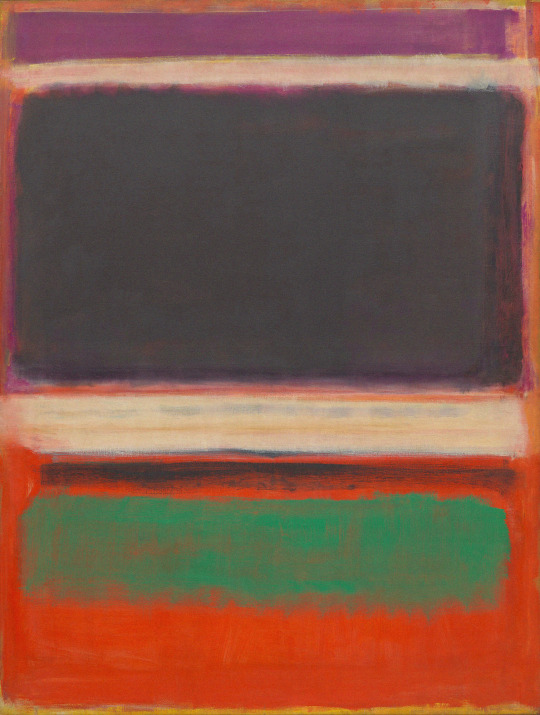
Rothko exhibited his new works in his signature style, introducing a compositional format that he would continue to develop throughout his career. His classic paintings of the 1950s are characterized by an increasingly simplified use of form, brilliant hues, and washes of color.

"I realize that historically the function of painting large pictures is painting something very grandiose and pompous. The reason I paint them… is precisely because I want to be very intimate and human."
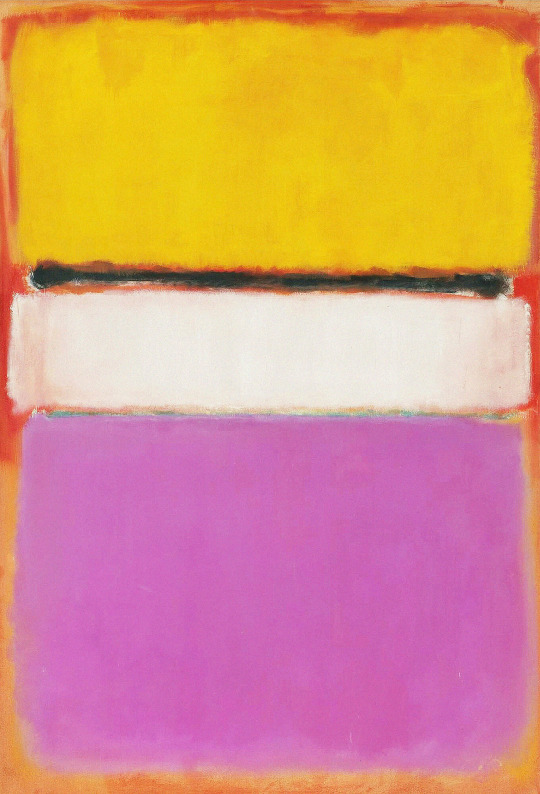
Rothko went so far as to recommend that viewers position themselves as close as 18 inches from the canvas so they might experience a sense of intimacy, awe, and the unknown. Rothko exhibited in several solo shows, met art dealers, and his financial situation began to improve.
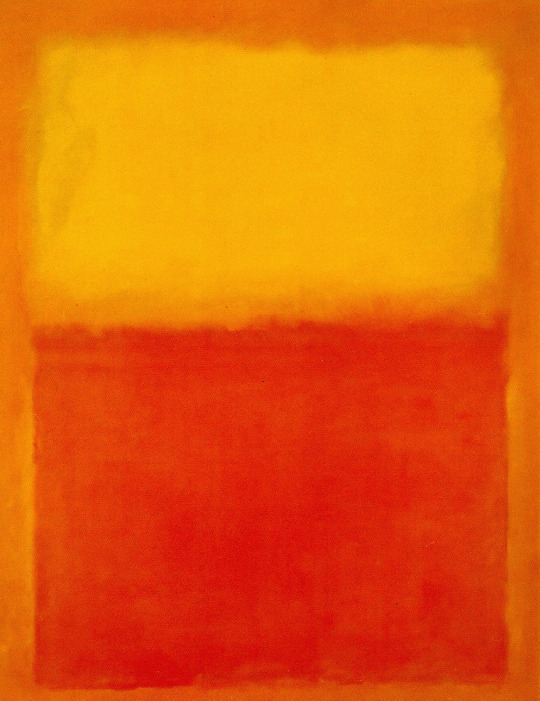
Despite his fame, Rothko felt a personal seclusion and sense of being misunderstood as an artist. His growing success led to fighting within his friend group, and he feared that people purchased his paintings out of fashion and the true purpose of his work was not being grasped.

In early 1968, Rothko was diagnosed with a mild aortic aneurysm; he ignored doctor's orders and drank and smoke heavily. On February 25, 1970, Rothko's assistant found the artist lying dead on the kitchen floor, having overdosed. He was only 66.
#Markus Yakovlevich Rothkowitz#Markus Rothkowitz#Markus#Rothkowitz#Mark Rothko#Mark#Rothko#American Abstract Expressionist#American#Abstract Expressionist#Abstract Expressionism#Abstract Expressionist painter#Abstract Expressionist artist#painter#artist
10 notes
·
View notes
Photo

Mark Rothko, born Markus Yakovlevich Rothkowitz (Russian: Ма́ркус Я́ковлевич Ротко́вич, Latvian: Markuss Rotkovičs; September 25, 1903 – February 25, 1970)
12 notes
·
View notes
Text
Rothko
Mark Rothko was a Russian born American painter. He painted predominately in an abstract style that the critic Clement Greenberg called “Color Field” painting. I find his work powerful.
Born Markus Rothkowitz in modern day Latvia, his father moved the family to the United States hoping to escape the anti-Semitic sentiments brewing in Europe at the time. As a Jewish man, Rothko grew up fearing being persecuted for his faith. That worry stayed with him into adulthood and was the reason why he changed his name from Rothkowitz to Rothko. Anxiety and depression would mark Rothko’s life in general, particularly as he grew older. Some of his works had a gloomy quailty. As Peter Schjeldahl, a writer for the New Yorker, put it, Rothko’s final works were “long on doom”. One of the paintings Schjeldahl was speaking of was this one:
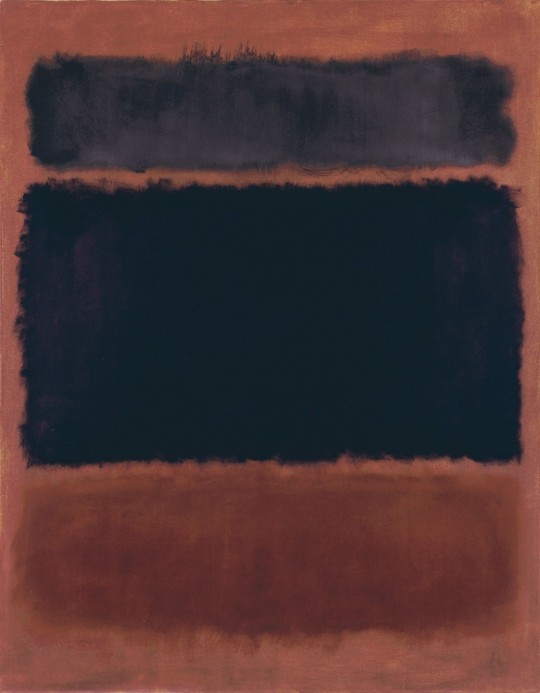
Gloominess would hardly characterize the full catalog of Rothko’s work though. As a young man, Rothko attended Yale University for two years. He would eventually drop out and move to New York to pursue painting as a full time endeavor. There he would attend the Art Students League and Parsons School of Design. He would begin to make figure paintings and draw inspiration form ancient mythology and European Surrealism. In the late 1940′s he would begin to create his color field paintings. Here are some of his early works.


For Rothko the act of making a painting was an importance exercise. His goal was to communicate powerful emotions. He summarized this, saying “I’m interested only in expressing basic human emotions—tragedy, ecstasy, doom, and so on.” In the wake of World War II, he felt that traditional art was becoming irrelevant and the world was becoming more complex, favoring simpler forms of expression. He wanted art to be potent and primal. In fact, he believed the paintings he made in the latter parts of his career were so powerful that viewers would cry while looking at them because, as he put it, “(they) are having the same religious experience I had when I painted them.” I have never cried while looking at a Rothko, but I have found some of them very affecting.

I find this painting to be quite moving. I think the oranges seem to almost glow and the red accents within the orange squares not only add a visual depth, but a fiery sensation to the piece. I also feel like the orange squares seem to float over the dark purple background, a quality I really admire and think adds to the energy of the piece. To me, this piece courses with exuberance and vigor in a way that I find inspiring. I think it serve as a great example of Rothko’s desire to appeal to basic human emotions.
Sources:
Khan Academy: https://www.khanacademy.org/humanities/art-1010/abstract-exp-nyschool/abstract-expressionism/v/the-case-for-mark-rothko
Moma: https://www.moma.org/artists/5047?locale=en&page=1&direction=
The New Yorker: https://www.newyorker.com/magazine/2016/12/19/the-dark-final-years-of-mark-rothko
Wikipedia: https://en.wikipedia.org/wiki/Mark_Rothko
1 note
·
View note
Text
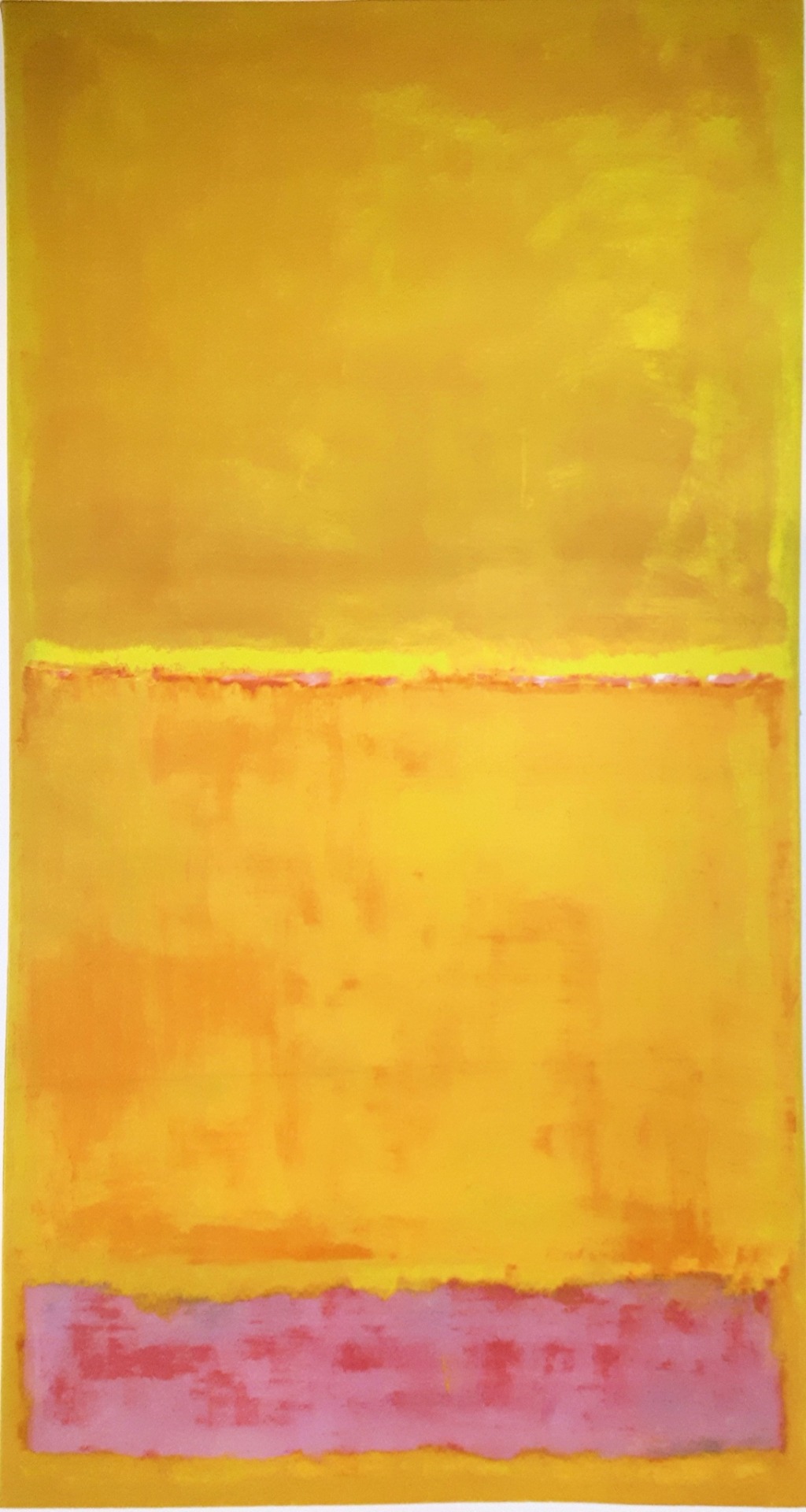
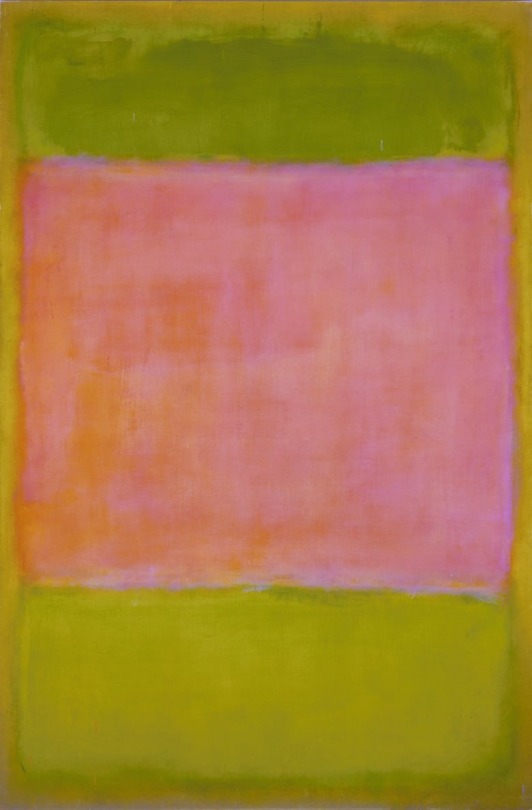


Markus Yakovlevich Rothkowitz
Mark Rothko 1903-1970
1 note
·
View note
Photo

Ustalara Saygı : “Mark Rothko” 1903 yılında Daugavpils'da doğdu. Asıl adı Markus Yakovlevich Rothkowitz idi. 1914'te babasını kaybeden sanatçı 1921'de Oregon eyaletinin Portland şehrindeki Lincoln Lisesi'ni bitirdi ve Yale Üniversitesi'nde sanat eğitimi almak için burs kazandı. Ne var ki Yahudi karşıtı eğilimler nedeniyle bursu yenilenmeyince buradaki eğitimi altı ay sonra bırakmak zorunda kaldı. Geçimini kuryelik ve garsonluk gibi işlerle kazandı. 1924 yılında New York'ta bir sanat akademisinde ve Parsons Tasarım Okulu'nda eğitim aldı. Ancak kendisini hep bir otodidakt olarak nitelendirdi. Parsons Tasarım Okulu'nda ders veren, soyut dışavurumcu sanata ilgi duyan Arshile Gorky onu en çok etkileyen ressamlardan biri oldu.Sanatçı, o yıllarda Yahudi Merkezi'nde çocuklara ders vererek geçimini sağladı.1935'te Adolph Gottlieph'in de dahil olduğu sekiz sanatçıyla birlikte, The Ten grubuna katıldı. 1938'de Amerikan uyruğuna kabul edildi ve dünyada yükselen ırkçılık nedeniyle adını Mark Rotko olarak değiştirdi. 1940'lara kadar eserlerinde realizm ve sürrealizm gibi akımlardan izler taşıyan eserler üretti. 1930'larda yaptığı Metro (Subway) adlı seride New York metrosunda insanları resmetti ancak onların bireysel dünyalarında kendilerine yarattığı hapishaneleri ve insanın modern dünyadan kopukluğunu anlattı.Nietzsche'nin Trajedinin Doğuşu adlı kitabından çok etkilendi. II. Dünya Savaşı yıllarında daha çok daha çok ölüm, din, mitoloji ve ahlaki konuları ele aldı. Zamanla eserlerinde karmaşık eserleri basit ifade edebilmeye odaklandı ve imzası sayılan kompozisyonu 1949'da kullanmaya başladı.İlk zamanlarında yaptığı eserlerinde bitki, hayvan ve balık formları görülse de zamanla bunlardan tamamen arındı. 1940'ların sonunda tarzını oturttu ve adından sıkça söz edilen bir ressam oldu.1964 yılında Teksas'ın Houston şehrinde bir şapelde insanların meditasyon yapacağı bir yer tasarlama işini aldı. Roth Şapeli olarak tanınan bu şapel için siyah ve koyu renklerle resmettiği 14 tablo yaptı ancak ağır bir depresyona girdiği için şapelin açılışına tanık olamadı.1970 yılında geride not bırakmadan intihar ederek yaşamına son verdi. #markrothko #markrotkhowashere #markrothkoart (Sanathane) https://www.instagram.com/p/CRbSHsYAJMD/?utm_medium=tumblr
0 notes
Text
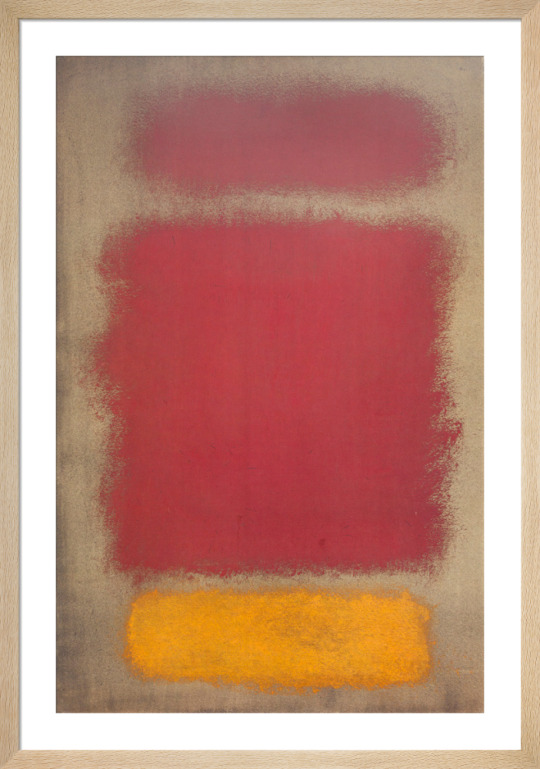
Untitled, 1968 - by Mark Rothko

Homage to Matisse, (1954) by Mark Rothko
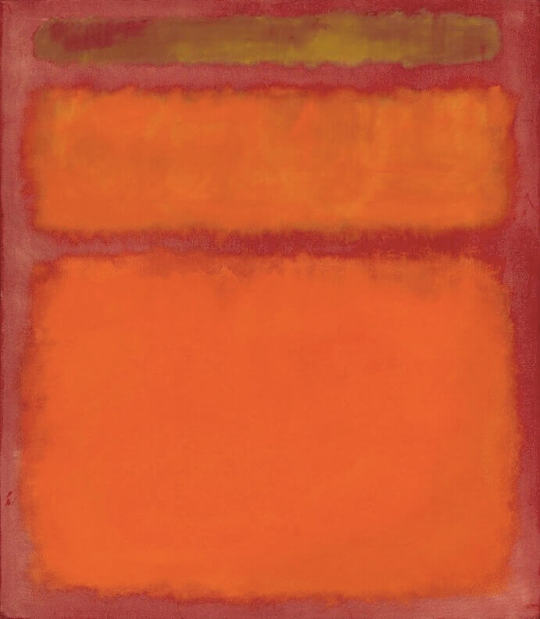
Orange, Red, Yellow, (1961) by Mark Rothko

Red, Black, White on Yellow, 1955 by Mark Rothko
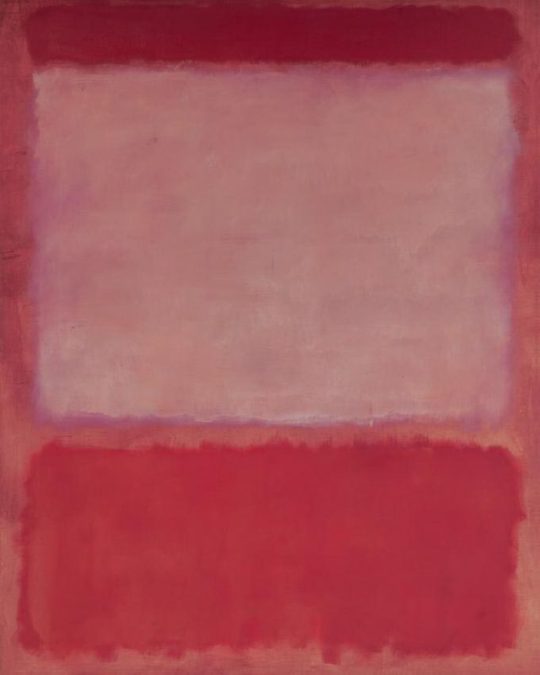
№ 16. 1960 by Mark Rothko
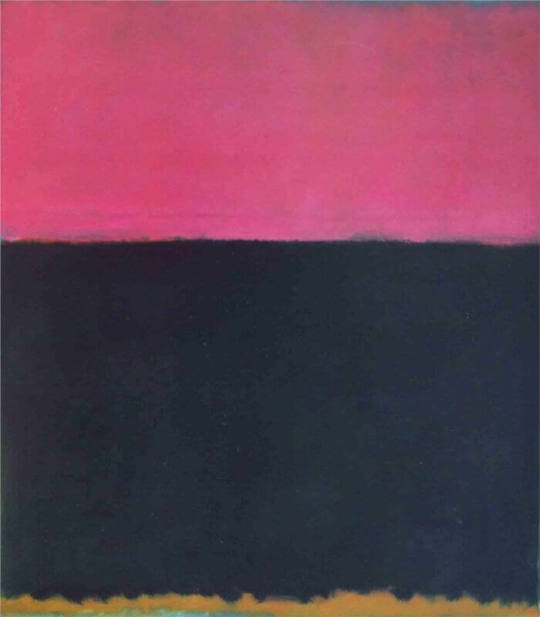
Untitled, 1953 by Mark Rothko

Untitled (No 16), 1951
0 notes
Text
I love how the play Red is basically just Ken and Rothko ranting at and trauma dumping on each other.
#this isn't an insult by the way#it’s a great play#definitely a Sumiro thing#it helped me develop in all sorts of ways#red#the play red#mark rothko#markus yakovlevich rothkowitz#john logan#noelle's rambles
0 notes
Photo

❣️Ren Sourcing Loves❣️ MARK ROTHKO (Kaydırmalı post👉🏻) -Please see comment section for English- 🌟TÜRKÇE: Mark Rothko (Markus Yakovlevich Rothkowitz) (1903 - 1970), Letonya kökenli Amerikalı, soyut tarzda bir ressamdı. En çok 1949'dan 1970'e kadar ürettiği, düzensiz ve dikdörtgen renk bölgelerini betimleyen resimleriyle tanınmaktadır. Başlangıçta ailesiyle Rusya'dan Portland, Oregon'a göç eden Rothko, daha sonra gençlik döneminin sanatsal üretiminin esas olarak kentsel manzarayla ilgilenmesi sebebiyle New York City'ye taşınmıştır. İkinci Dünya Savaşı'na yanıt olarak, Rothko'nun sanatı, trajediyi ifade etmek için mitolojik temalar ve sürrealizm ile deneyler yaptığı 1940'larda bir geçiş aşamasına girmiştir. Bu sürecin sonuna doğru, Rothko hayatının geri kalanında kullanacağı deyim olan dikdörtgen renk formlarına daha da soyutladığı saf renk bölgeleri olan tuvalleri boyamıştır. Daha sonraki kariyerinde Rothko üç farklı duvar resmi projesi için birkaç tuvale imza atmıştır. Seagram duvar resimleri, Seagram Binası'ndaki Four Seasons Restaurant'ı süslemiştir, ancak Rothko sonunda resimlerinin zengin yemek yiyenler için dekoratif objeler olacağı fikrinden tiksinmiş ve yüksek ödemeyi iade ederek resimlerini Tate Modern de dahil olmak üzere müzelere bağışlamıştır. Rothko hayatının çoğunu mütevazı bir şekilde yaşamasına rağmen, 1970'teki intiharını izleyen onlarca yılda resimlerinin yeniden satış değeri muazzam bir şekilde artmıştır. Rothko'nun resimleri aynı zamanda moda tasarımcılarını da etkilemiştir ve çeşitli stillerdeki renk bloğu uygulamaları açıkça onun benzersiz tarzını hatırlatmaktadır. İşte bazı örnekler; Schiaparelli Haute Couture Sonbahar 2017 ve Naeem Khan İlkbahar 2018 Hazır Giyim koleksiyonlarından elbiseler ve Raf Simons Sonbahar 2008 Erkek giyim koleksiyonundan bir süveter. 📝 wikipedia.com 📸 vogue.com, wikiart.org #rensourcing #rensourcingloves #markrothko #rothko #rafsimons #schiaparelli #naeemkhan (Ren Sourcing - Sibel Ege) https://www.instagram.com/p/CPJUKwULkeU/?utm_medium=tumblr
0 notes
Text
#MarkRothko #colourfield #abstractimpressionism
Mark Rothko, born Markus Yakovlevich Rothkowitz (Russian: Ма́ркус Я́ковлевич Ротко́вич, Latvian: Markuss Rotkovičs), (September 25, 1903 – February 25, 1970), was an American abstract painter of Latvian Jewish descent. He is best known for his color field paintings that depicted irregular and painterly rectangular regions of color, which he produced from 1949 to 1970.
Rothko did not personally subscribe to any one school; however, he is associated with the American Abstract Expressionist movement of modern art. Originally emigrating to Portland, Oregon from Russia with his family, Rothko later moved to New York City where his youthful period of artistic production dealt primarily with urban scenery. In response to World War II, Rothko's art entered a transitional phase during the 1940s, where he experimented with mythological themes and Surrealism to express tragedy. Toward the end of the decade Rothko painted canvases with regions of pure color which he further abstracted into rectangular color forms, the idiom he would use for the rest of his life.
0 notes